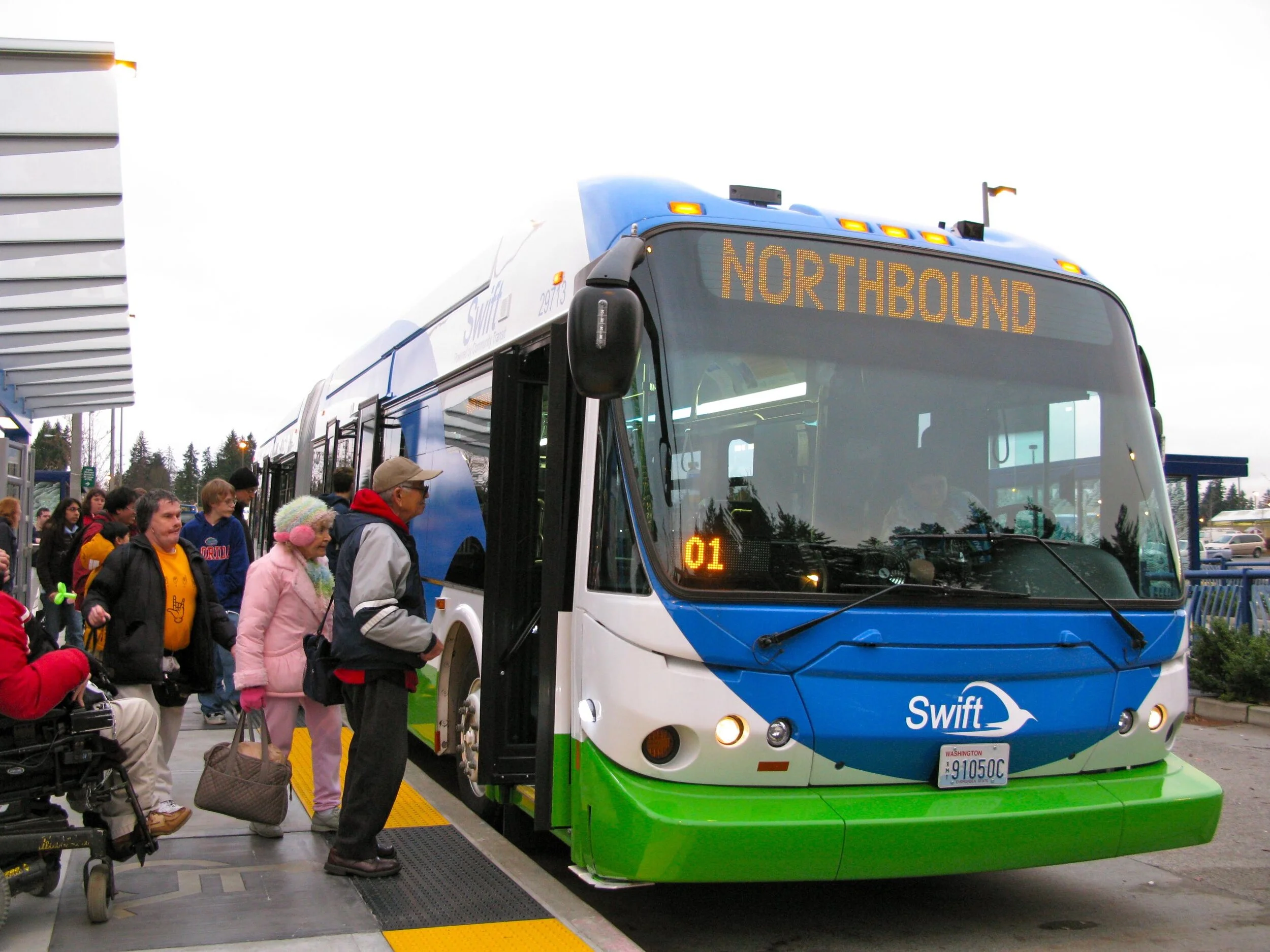Instead of waiting for someone else to fix their community’s transit problems, this group of local advocates took initiative with something simple—and powerful.
Read MoreAmerican bus stops often leave people exposed to the elements without even a place to sit as they wait for their buses to arrive. Here’s how advocates around the country are tackling this problem — and how their cities are responding.
Read MoreThe reign of the yellow school bus is officially over, as the majority of students get to school by private vehicles and schools cut their bussing programs. How did this shift happen? And should we really mourn the bus?
Read MoreMany bus routes have moved away from traditional static signage to digital maps and schedules that can be updated in real time. But is this really the right move, or are there enough benefits to static signage to justify it sticking around?
Read MoreEven just a little bit of snow can reveal a lot about the vulnerability of the suburban development pattern.
Read MoreLos Angeles is often held up as the case study for car-centric development run amok, but in recent years, the city has been pursuing a completely different path: public transit champion.
Read MoreLike many other places around the U.S., Philadelphia is facing school bus driver shortages and bus scheduling issues. Its solution? Offer $300 per month to families that drive their children to school.
Read MoreBuses are great, but not if the surrounding infrastructure doesn’t support people getting to their bus stop on foot.
Read MoreKentucky’s largest school system recently had to cancel classes due to a disastrous overhaul of the bus system—but they’re not the only ones struggling with student transportation issues.
Read MoreWhen this Texan city’s bus system fell into decline, local advocates took the next smallest (but highly effective) step toward making their public transit more hospitable: by installing homemade bus benches.
Read MorePlenty of debate swirls around the question of whether or not government services like transit should be "free" to the end user. Here's what's missing from that debate.
Read MoreTwo radically different bus trips highlight a common conundrum for supporters of public transit.
Read MoreStranded with a dying phone and no car, our Neighborhood Storyteller relies this week on public transit and the kindness of strangers to get where she needs to go.
Read MoreJust like last year, we’re facing a bus driver shortage. Some are asking why our kids can’t just walk, bike, or take public transit to school, but the answer isn’t that simple.
Read MoreLeadership in Indianapolis has taken strides toward lifting parking minimums, and making their city less car dependent and more transit friendly—all while keeping their fiscal house in order.
Read MoreIt’s not easy to live without a car when you have young children, but it’s certainly possible. Plus, having to walk can help you build unexpected connections with your community.
Read MoreSchools across the U.S. are experiencing a bus driver shortage, but the root cause of this issue has less to do with the COVID pandemic than one might think.
Read MoreThe most exciting advances in public transit in North America are coming from some unexpected places, where they’re figuring out how to achieve more with less. Indianapolis might be the newest to join that club.
Read MoreWhere did we spend our money building transit in the U.S. in the last 10 years? And what did we get for it?
Read MoreNew York’s newest BRT line is being called the “Miracle on 14th Street.” But why is it so miraculous?
Read More



















